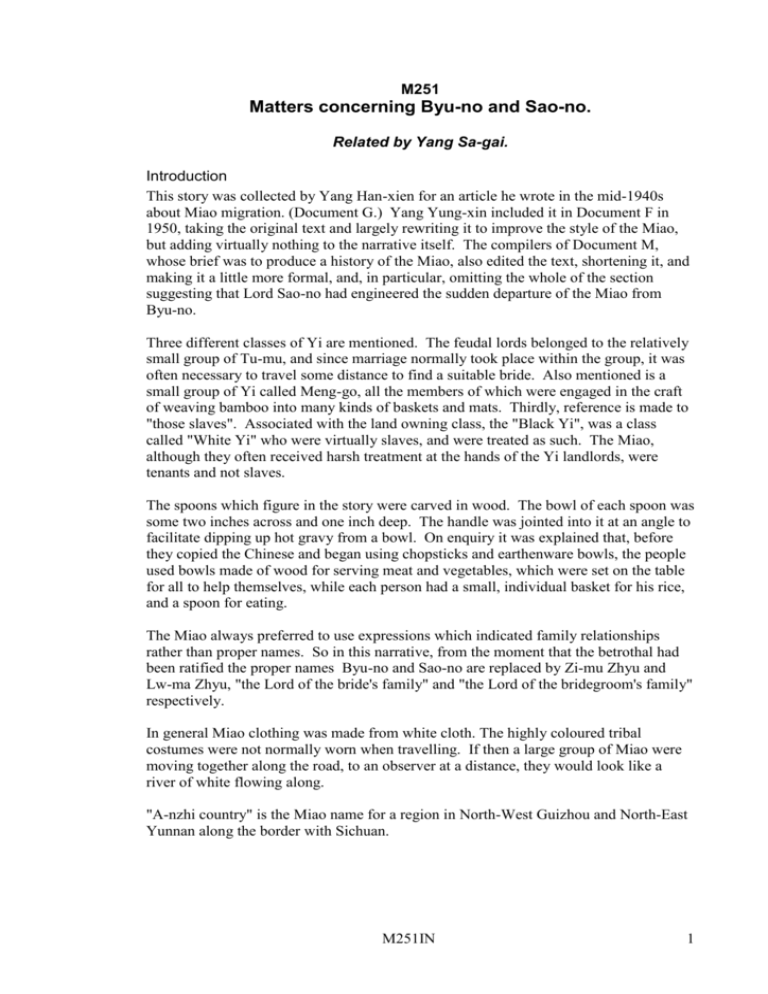Word97 Introduction
advertisement

M251 Matters concerning Byu-no and Sao-no. Related by Yang Sa-gai. Introduction This story was collected by Yang Han-xien for an article he wrote in the mid-1940s about Miao migration. (Document G.) Yang Yung-xin included it in Document F in 1950, taking the original text and largely rewriting it to improve the style of the Miao, but adding virtually nothing to the narrative itself. The compilers of Document M, whose brief was to produce a history of the Miao, also edited the text, shortening it, and making it a little more formal, and, in particular, omitting the whole of the section suggesting that Lord Sao-no had engineered the sudden departure of the Miao from Byu-no. Three different classes of Yi are mentioned. The feudal lords belonged to the relatively small group of Tu-mu, and since marriage normally took place within the group, it was often necessary to travel some distance to find a suitable bride. Also mentioned is a small group of Yi called Meng-go, all the members of which were engaged in the craft of weaving bamboo into many kinds of baskets and mats. Thirdly, reference is made to "those slaves". Associated with the land owning class, the "Black Yi", was a class called "White Yi" who were virtually slaves, and were treated as such. The Miao, although they often received harsh treatment at the hands of the Yi landlords, were tenants and not slaves. The spoons which figure in the story were carved in wood. The bowl of each spoon was some two inches across and one inch deep. The handle was jointed into it at an angle to facilitate dipping up hot gravy from a bowl. On enquiry it was explained that, before they copied the Chinese and began using chopsticks and earthenware bowls, the people used bowls made of wood for serving meat and vegetables, which were set on the table for all to help themselves, while each person had a small, individual basket for his rice, and a spoon for eating. The Miao always preferred to use expressions which indicated family relationships rather than proper names. So in this narrative, from the moment that the betrothal had been ratified the proper names Byu-no and Sao-no are replaced by Zi-mu Zhyu and Lw-ma Zhyu, "the Lord of the bride's family" and "the Lord of the bridegroom's family" respectively. In general Miao clothing was made from white cloth. The highly coloured tribal costumes were not normally worn when travelling. If then a large group of Miao were moving together along the road, to an observer at a distance, they would look like a river of white flowing along. "A-nzhi country" is the Miao name for a region in North-West Guizhou and North-East Yunnan along the border with Sichuan. M251IN 1











